Customers walking into automobile showrooms in early 1942 knew that the choice they made would have to last them for a while. The country was mobilizing for war, and the word was out that automobile production would soon cease. So, what would have been a good choice if you didn’t know when you would get your next new car? One of the best choices would be a car like this 1942 Plymouth Special DeLuxe sedan for sale on Craigslist in Brunswick, Georgia. Amazingly, this Plymouth is all original and has been in the same family for three generations. Is the asking price of $22,000 reflective of the market? Thanks to T.J. for the prewar tip!
Imagine it is January 1, 1942. The country is still reeling from the Japanese attack on Pearl Harbor just one month previous. The United States is going to war in both the Pacific and Europe. Our industrial might will soon be focused on a worldwide war at a scale nobody has ever seen. Consumers had been warned in the middle of 1941 that the war was consuming resources to the point that rationing was on the table. If you were going to purchase a new vehicle to last for the duration of the war, the time to act was yesterday.
What would be a good choice? If you were looking for basic transportation, nearly everyone shopped for a Chevrolet, Ford, or Plymouth. These low-priced vehicles all brought to the table acceptable build quality, reliability, and the prospect of finding spare parts. Of these, a good case could be made for picking out a Plymouth. It was a 1941 Plymouth sedan driven by the Richardson Pan American Expedition that made headlines by attempting to travel the Pan American Highway through some of the roughest jungles known on the planet. If a Plymouth can withstand that abuse, then it would certainly last the duration of the war.
While the ad states that this unrestored 1942 Plymouth you see here has been in the family for three generations, it is not clear who purchased the car from the Plymouth dealer so many years ago. If it wasn’t the first generation of the family, whoever took possession of the car kept the paperwork and manuals that remained with the car. Over the years, successive owners have built up a collection of even more paperwork and a collection of spare parts for this Plymouth. The only substantial change to this highly original car was the addition of an R 10 overdrive transmission that allows it to run comfortably at highway speeds.
Despite the long-term family ownership and amazingly original condition, this is a 1942 automobile. While production began for this model year on July 25, 1941, the last Plymouth for that model year rolled off the assembly line on January 31, 1942. The reseller mentioned that this car has chrome trim. That fact is significant in that chromium was one of the first resources to be regulated as we descended into war. Not long after production started, the production of chrome trim was halted and paint was substituted for the process. Just 152,427 Plymouths were built that year.
The fact that this car has survived so long is a testament to just how durable prewar Plymouths were. The United States military thought so as well, as many of the vehicles in our war machine soldiered on with flathead Mopar engines under the hood. Most of the new old stocks for these powerplants found today are left over from spares produced for the war effort and beyond.
It is sad to see that this Plymouth is being sent away to find a new home after all these years in the possession of one family. However, that could be a good thing if you are looking for an original car of that era that is still running and capable of being driven nearly anywhere. The seller seems motivated to sell by being open to trades, but the price may be a bit of a hindrance. Let’s hope this well-cared-for Plymouth finds a good home soon.
What make of car would you have picked in early 1942? What would be your reason behind that choice? Please share your choice and reasoning in the comments.
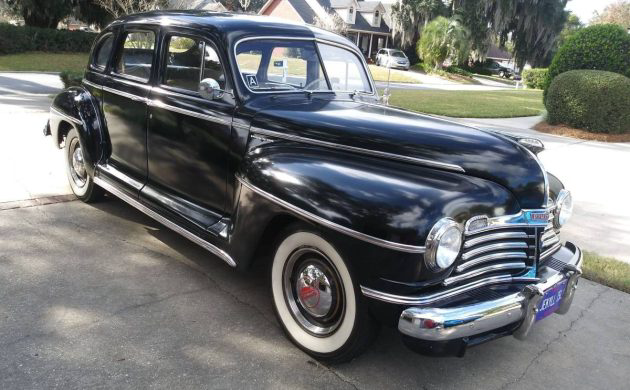
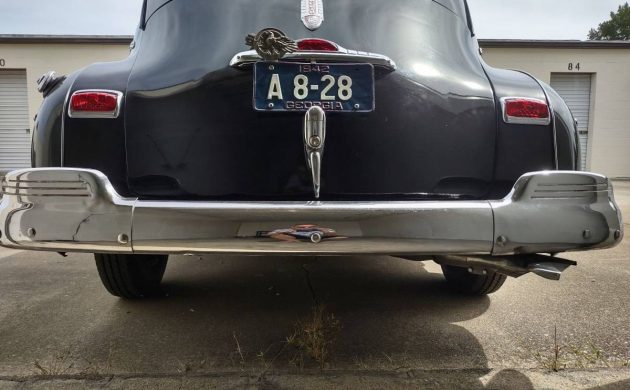
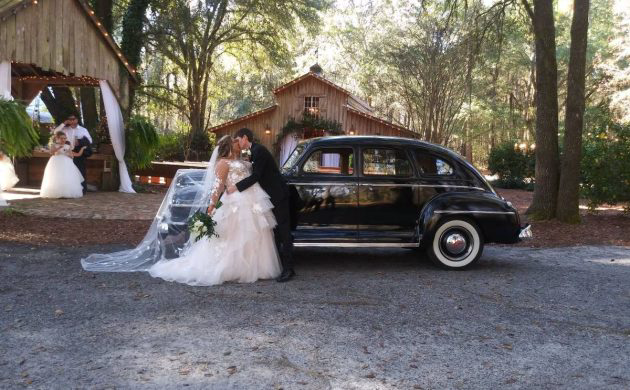
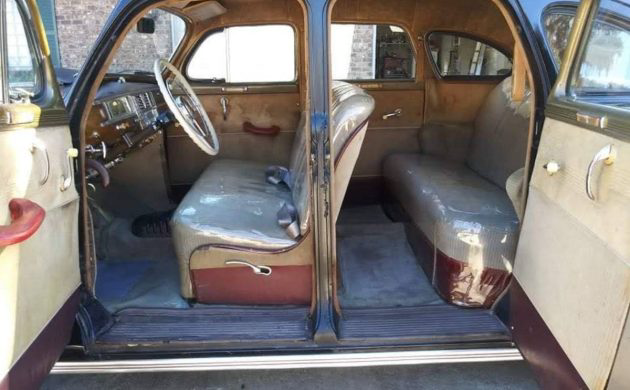
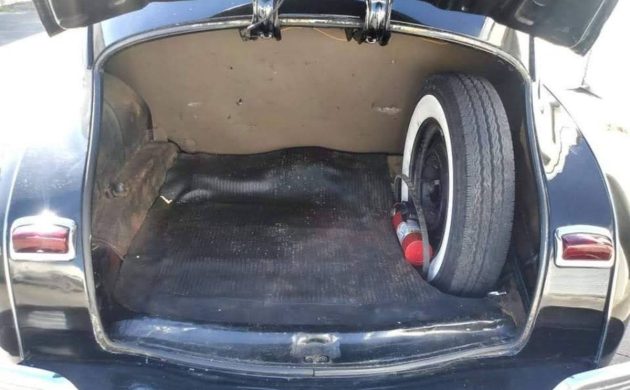



I have a 1940 Plymouth P10 2 door sedan. Not as nice as this one, but a great driver. Driving old 40’s cars is a unique experience. No turning up the earbuds and being coddled in an isolated cocoon of bland greyness. An old car of the 40’s commands your attention to braking, shifting and steering. But nothing like it for a pleasant Sunday afternoon drive. Makes old fellows like me remember why we enjoy driving in the first place. Not just a method for getting from point A to point B as effortlessly as possible. But riding and driving for the sheer fun of it all. Kids don’t know what they are missing these days.
Wow, the 1940s Plymouth/Dodge cars were really handsome. But the early 50s cars were dumpy looking until Exner came along.
K. T. Keller, who took the reins after Walter Chrysler’s death decided on a 3 box style for the company’s cars, with enough room for the driver to wear a hat. It people like Exner at Chrysler Corp. and Harley Earl at GM, to shake things up a bit. They made designs that caught attention to the humdrum of driving a so-so looking car. It got people into the showrooms and got those cars sold. They were nicer, sleeker, and in many cases, faster. Thus the beginning of the changes that started in late 1954, and lasted until a few years ago. I wish that we had some of those designers around to shake things up again. Today we have BLAH crossovers and SUVs. Style went away, never to return since the money hungry MBAs running these companies are interested in profits rather than offering a nice coupe, sedan, or convertible.
So True. in 1965 I could name 100 % of the cars driving down the road. Today I could maybe name 25 % if I was truly lucky. The LAST new car / pickup I have purchased was in 2008 and the one before that was my 1978 F-350 that I still own ( both of them including the 2008 Grand Marquis ). My 78 is almost solid steel. Still have my 1972 F-250 4 wheel drive and about a dozen others going back to my 1931 Model A’s a pickup and a coupe. Zero chance of my wife or I ever buying a “new” vehicle during the rest of our lifetimes.
My mother had a 1942 Nash, which she traded-in on a 1948 Plymouth when its muffler got loud, even as my father, after the War, still drove his huge 1939 Packard (a posh living room on wheels😊). The 1946-’48 Plymouths were difficult to tell apart, and a significant (if not overwhelming) face-lift of the 1942 seen here. Although we do not have a clear shot of the dashboard, I expect that it is not too different from the ’48 (except perhaps for details such as colour — the ’42 might be woodgrained). I never did figure out if the 1942 Plymouth was a major remake of the ’40-’41, or an entirely new body shell. One of my uncles had a 1941 DeSoto, which looked to me like a more ornately detailed 1941 Plymouth. ’41 Plymouths seemed to last for ever — still seen commonly on 1970s roads, long after ’41 Fords and ’41 Chevolets were parked in the grass on flat tyres, gathering rust with mice nesting inside. I would absolutely LOVE to have this car!!! I enjoy 1940s motoring anyway, even with the added frequent “attention” required for daily reliability — all in the charm and “experience” of it. The Chrysler automobiles of this era had such graceful lines! — GMs were okay on looks, but pedestrian — and the Fords looked more functional than stylish (outside lines — I loved their dashboards and pure comfort ride!)
All Plymouth bodies from 1940 to first series 1949 were based on the same body shell. FYI.
I don’t know what I would pick as I always have had someone else’s junk. The only thing I ever bought new was a crotch rocket which I love and cherish and ride frequently. My grandfather told me of how things were rationed, tires,oil and so on. He lived in the city so he sold his car, a 30s Ford and as he said and, ” took the street car” for the wars duration. Which if anyone remembers were electric. This car is cool, long before me. I am glad it survived. I am the second owner of many of my collection, some of which I have had longer than the folks that bought them new. I have never owned a new car. My son has no interest in my things so who knows where they will go once I depart. I hope it gets a good home and goes on.
I would love to be your “new” son. I would take great care of everything you have.
Chris Cornetto: SMILE when you say, “electric street car”, since I took them many times earlier in my life. By what you comment, you seem to be at least one generation or more younger than I — so, I hope that what becomes of your collection when you no longer are here to treasure and attend to it, is nothing you will need to worry about for many years to come! My son loves my 78 rpm records — he could not escape from hearing them when he was a child — so, I imagine that he will take them over when I am gone. But that is not a subject he wants to entertain, since he seems to think I will be here as long as he is! He “denies” my age: to him, I am frozen in time from when he was a little boy. But I did recently run into someone I had not seen in 55 years, who swore that I had not changed, except for my white hair😊. Sadly, he had to tell me who he was. To be fair, he was about 14 back then, and I was well into adulthood. My son’s only problem is, when he was a young boy, he looked UP to me when he walked beside me — but, ever since age 12 or so, he’s had to look DOWN at the top of my head — and that seems somehow “wrong” to him. He has all he can do, to “fold” himself into my 1988 Grand Marquis — and he says he wishes that he were not a “giant” (he’s 6’5″, and I am 5’6″). He can thank his late mother and her father for his size. I’ve always appreciated his astounding physical strength, combined with the most gentle of natures and kind smile.
Nice story Harrison, thank you!!
Harrison, I say electric because I am amazed how many individuals don’t know things like that existed. Even though my grandfather passed in the mid 80s, he showed and told me many things that were long gone by then. He ran theatres back in the day. He started in the silent Era. His entire basement was 35mm films. I still remember how to thread the projector, install a carbon, and splice the stuff when the film broke. His health was poor so I spent quite a bit of time with him in the last years of his life. Thursday night was movie night as he had a projection booth in the basement and a screen came down from the ceiling. I guess you may have a point that my son may think I will be here indefinitely. I had him late so I often joke I can be the ogreouse daddy or bad grandpa depending on the situation. As for my cars, his seemingly lack of interest may be the fact that a good many of them we use daily. he has grown up in a square Caprice, gone to the beach in an old 70s van, dove over the door into the interior of an old convertible or slept under the stars on the hood of some ancient thing that most were eaten by the metal muncher decades ago. Who knows. By the way I have a 1938 Wurlitzer bubble light juke box that played 78s. I also have a victrola that you crank and play 78s. My son slipped one day and said, you not going to sell these are you? I replied no, just playing with it. Oh good I like this stuff..hmmmm I guess I will see when he starts driving how the cars play out.
Don’t feel badly with the “electrical street car” comment… A few weeks ago I had dinner with a wonderful young family. The little 9 year old asked me with great interest and sincerity, “What was it like to grow up with covered wagons?” Now mind you, her grandfather is 80, and I am 66! “Out of the mouth of babes…” 😅
He also wears size 16-1/2 shoes — not easy to find!
To Greenhorn: glad you enjoyed it! One of the privileges of age: lots of memories! One liability is, you remember exactly what you did, seventy and more years ago, in detail — but you might not have as clear a recollection of yesterday’s personal events!
LOL … that’s me at 77
Had a ’46 P-15 sedan and loved it! I
paid $50 for it in ’74 and spent the time that I was off the road playing
music to get it running again. Three
weeks later, and help from Dad, the
old gal roared to life again. First thing
that happened was a huge smoke cloud as the new plugs I put in burned
all the Marvell Mystery Oil of the cylinders. It was so bad that my friend’s neighbors called the Fire
Department believing that the car had
actually burst into flames! After doing some due diligence, I found out
through Plymouth that my car was
built not long after VJ day in late ’45.
I also had all the docs that came with
the car that verified what I already knew by contacting Plymouth. As my musical career took off, I wound up
selling the car to that same friend.
I knew that I wouldn’t have time to do
it justice. He took it to Oklahoma with
him and that’s the last I saw of it. That was 50 years ago and I still regret it today.
Chris Cornetto: you never know what your son might come to treasure in the future. I find now that things which surrounded me in the 1940s seem to mean more to me now, than they did then. I got a portable radio in 1949 with four tubes — and it still works. I seldom use it, however, because tube portables are very hard on batteries, so it is insanely impractical now. But I still keep it on my bedside stand — for WHAT? And I have nearly countless 78s from the 1940s and early-to mid 1950s: I do enjoy listening to them, as that is my preferred popular music… If your grandfather passed in the 1980s, you DEFINITELY are a lot younger than I!
I remember going through a photo album that belonged to my grandparents and in it was a photo of my mother and aunt when they were little kids behind them was a plymouth or dodge sedan similar to this as my grandfather only drove mopar cars till he died in the late 1980s.
This one sure has been well kept and has a moonshine runner or gangster era vibe to me and I wish I could own it!
To CarNutDan: Odd — I would more associate 1930s vehicles with gangsters — especially early 1930s, even late 1920s — Al Capone’s time: this 1942 Plymouth is the sort of family sedan that I saw and rode in all the time, back when it was new. Not the ’42 so much, as there were not that many 1942s. But certainly the 1941 Plymouth, Chevrolet, and Ford, all were very common. By the late 1950s, anyone who still drove a prewar car was either too poor to afford a new one, or else elderly and took years to wear a car out. Kids liked to hot-rod and customise the prewar and just postwar Fords and Chevys — not so much the Plymouths.
Gangsters and skill are not two words that would come to mind but consider this. A guy could shift and drive one those BIG Packards or Caddys all while another hung off the side on a running board firing a revolver or in some cases a Thomson sub machine gun.
At the end of WWII my mother and uncle went halves on their first car, a 1940 Plymouth. My mother didn’t know how to drive yet, as there was no family car, they lived in Queens. She was taught by the next door neighbor, a fireman that drove the back end of a hook and ladder in NYC. My mom was barely 5ft. tall, I often wonder how she did it with no p.s. no p.b. and a 3 on the tree. When I was a kid my mom had a full size ’67 Mercury and she could whip that thing around our local dept. store parkade and not touch the brake, inches on each side. The only dent in that car was the one I put in it.
I was buying my first car in 1958 when I was 14, and my Dad and I had agreed to buy a ’40 Plymouth coupe in the neighborhood, but when we went back to get it the next day the guy had taken a gauge and the hubcaps off, so we nixed the sale. Ended up buying a ’46 Plymouth special deluxe coupe coupe for $80. Someone had put 2 carbs and dual exhausts on it, and it was loud. I drove it around for 2 years…..loved it….easy to work on (cardboard for gaskets, sort of worked for awhile), learned a lot. Those 40’s Plymouths, Dodges, Desotos sort of flew under the collector radar for a long time but are now rightly being recognized as excellent cars. I’d love to have this one….
Bupcus, age is a number. I try not to even let it enter my thoughts. I to have well, a Philco 60s model transistor hand held radio that my grandfather gave me when I was around 3. I understand when you say items from when we were low mileage mean more now, however my greatest joy has been watching my son play with my toys from when I was a youngster. Time is a thief. I count myself extremely fortunate that I have kept all the memories and things that have carried me through life. This Plymouth featured here carried generations of a family through good and bad and can be a testament to their strength. I hope the next owner has dept and sentiment this car deserves.
My Grandfather had one like this. His was light green as I recall. He drove it until he bought a new 1957 Plymouth. I always enjoyed riding in the old one. I guess that is why I have a fondness for these fat fender cars. This one is nice and I hope it finds a good home.
I have 53 Dodge truck with the same flathead 6 cy. & I wonder of someone installed the same tranny they installed in this one Because mine has no trouble running comfortably at 70 when folks told me these things can’t go much higher than 50 because of the gearing. the engine was sent back east for a rebuild & runs excellent I bought the 52 hythouth 2 door wagon just to get the motor, aid 500.00 for the whole car then gave it away after I took the engine out. it was a very nice wagon but needed a lot of work the guy I gave it to couldn’t believe it. I gave him the old motor too it was blowing head gaskets because the block was tweaked.
Wow! What a time capsule. It even still has (as the CL ad notes) the “A” windshield sticker from WWII gas rationing. The A sticker meant you were allowed just 4 (later 3) gallons of gas per week. That was the lowest gas allocation. Pleasure driving was banned (“Is this trip really necessary?”) and a nationwide 35-mph speed limit went into effect. Even if you could get gas, tires were rationed and hard to get. So some parked their cars for the duration.
My folks had a ’41 Plymouth after the war before I was born. My mom’s favorite car, I was told, though she didn’t drive in those days, learning how only after the ’41 was traded in on a ’48 Chrysler Windsor Traveler with semi-automatic transmission in the early ’50s. That ’48 remained the family car until 1959.
At Chrysler, the ’41s and ’42s were facelifted ’40s and the ’46-48s were warmed-over ’42s with minor changes. The “new” postwar Chrysler vehicles didn’t arrive until the 1949 “second series” in early ’49.
What a beautiful 1942 Plymouth.
Absolutely BEAUTIFUL ’42 Plymouth: I WANT it!
Too bad that someone put seat belt in it.